Over the last 6-8 months we’ve seen watch companies including Garmin and COROS add multiband/dual-frequency GPS chipsets to their watches, which have long-promised to be the holy-grail of GPS accuracy. As I’ve shown in my in-depth reviews though, that promise is sometimes a bit far-fetched. Yes, things are better than before – but not always substantially or even noticeably better.
But one trend I’ve noticed is that both Garmin and COROS have been improving their GPS tracks. The changes from last August with the COROS Vertix 2 and multiband GPS to December were noticeable. Not major, but slightly better. And even the GPS tracks I got in January versus March on the Fenix 7 or Epix Sapphire editions (which contain multiband GPS) were again, noticeable.
So I recently had a flight layover in New York City, giving myself and my wife just enough time to put these top two models to the test. Of course, like any test, things got out of hand quickly. And before I knew it the two of us were armed with 7 GPS watches testing out all sorts of theories. And let me tell ya: There were some surprises here.
You can certainly read the entire accuracy test below, though realistically you’ll probably find the video more detailed in some areas since the post only contains screenshots of certain GPS tracks, whereas the video shows the full length of the tracks.
The Test Setup:
For this test, my main goal was to do a head-to-head between the Garmin Fenix 7 Solar Sapphire and the COROS Vertix 2 – both of which have multiband GPS. I wanted to see how well these would handle in what is generally seen as the most difficult GPS conditions in the world (Manhattan). I’ve traveled to 80+ locations in the world, and countless mountains and other locales – and nothing hold a candle to the GPS-hell that is Manhattan, especially around the Times Square area.
However, as always, I start getting curious about other things. How much better is Fenix7 Sapphire versus non-Sapphire? That’s because the Sapphire edition is the one that has the multiband/dual-frequency GPS, whereas non-Sapphire doesn’t (both use MediaTek (aka Airoha)). And then from there I started pondering – OK, how much better is the Airoha chipset in the Fenix 7 base edition compared to the older Sony chipset in an Instinct 2 or Descent G1? And certainly, someone will ask about the Epix too. As you can see, stuff got out of control quickly. I also had planned to take an Apple Watch Series 7 with me, but it was failing to charge that afternoon, and after waiting an hour, I eventually gave up on it. Next time!
The contenders:
COROS Vertix 2: Multiband/dual-frequency
Garmin Fenix 7 Solar Sapphire: Multiband/dual-frequency
Garmin Fenix 7S Solar Sapphire: Multiband/dual-frequency
Garmin Fenix 7 Base: All Satellites (New Fenix 7 auto mode)
Garmin Epix Gen2 Sapphire: Multiband/dual-frequency
Garmin Instinct 2 Base: GPS+GLONASS
Garmin Descent G1 Solar: GPS+GLONASS
Now for today’s test, my wife and I ran side by side on the same route at the same time. So practically speaking, these GPS tracks should be identical. While technically speaking you can see differences between different individuals due to body blockage, I don’t consider that a valid excuse for poor GPS. If a person’s height or being a couple of feet to the left/right/ahead/behind is the singular consideration for good GPS, then the issue is the watch – not the person. Certainly, in a race you wouldn’t know where the ‘perfect’ spot is for GPS at all times.
Similarly, I don’t consider choosing left vs right wrist a valid excuse for poor GPS in most situations. The only scenario where I’d give that a pass was if you ran on a sidewalk *right up against* these tall buildings the entire time with just one side against the buildings. But we ran in the street and also flipped sides halfway through.
Here was my running setup:
Left wrist: Garmin Fenix 7 Solar Sapphire
Left hand: Garmin Fenix 7 Base
Right wrist: COROS Vertix 2
Right hand: Garmin Descent G1
My rough goal here was basically to have the two main multi-band contenders on opposite wrists, with the two non-multiband options complimenting it on opposite wrists. Which ultimately looks like this (obviously HR is discarded from the hand-watch):
This setup is actually how most wearable companies will test units from a GPS standpoint. This means the watches have near-identical visibility to the sky, without blocking each other. Further, it reduces issues with ‘bouncing together’, when you put two watches on the same wrist next to each other. Obviously, for the watches out on the hands, there’s no optical HR (from a test validity standpoint, in reality, it works surprisingly well). But I didn’t care about optical HR today.
Meanwhile, my wife had:
Left wrist: Garmin Fenix 7S Solar Sapphire
Left hand: Garmin Epix Sapphire
Right wrist: Garmin Instinct 2 Base
Now, finally, note that in order to make this test representative of normality, all of the units were paired to their respective apps and had their GPS satellite pre-cache synced ahead of time (EPO file). This automatically happens on your watch, which speeds up finding satellites massively (from minutes to seconds). Further, after landing at the airport (Newark), I had all GPS units find a signal there briefly – before heading into the city. Thus, they at least knew which region they were in (coming from Amsterdam).
Got all that? Good. Let’s get going.
Running the route:
This is a route that I have used for over a decade to test GPS watches. I use the same route so I can most easily look back on these tests over the next decade, and compare them to stuff from the Forerunner 305 era. The test starts out a few blocks from Times Square, standing between 60-story buildings. I then run half a dozen or so blocks to Central Park, where I do a loop around that, following the road. I do this because while GPS can often suck in the building portion, I want to see if it can properly lock-in on the right tracks as it gets to more open areas in the park (historically, the answer has varied quite a bit).
Further, while Central Park is mostly open (with light tree cover), it’s surrounded by tall buildings, which often cause GPS signal reflection errors. So it’s harder than it might appear.
With that, we headed outside and started all the units to find GPS. Lock-times were pretty darn quick across the board. They were as follows:
COROS Vertix 2 Multiband/dual-frequency: 10 seconds
Garmin Epix Gen2 Sapphire Multiband/dual-frequency: 20 seconds
Garmin Fenix 7 Solar Sapphire Multiband/dual-frequency: 20 seconds
Garmin Fenix 7S Solar Sapphire Multiband/dual-frequency: 28 seconds
Garmin Instinct 2 Base GLONASS: 28 Seconds
Garmin Fenix 7 Base All Satellites: 32 seconds
Garmin Descent G1 Solar GLONASS: 34 seconds
From there, the first section was in the buildings, and you can see that while these units proclaimed lock/ready status, in reality, they wouldn’t reach their peak GPS satellite lock till later. Here’s how the two top contenders faired – the Garmin Fenix 7 Solar Sapphire and COROS Vertix 2 (both multiband). Note that you can watch the full track progression in the video:
As you can see, the Garmin easily beat the COROS Vertix 2 for the first 4-5 blocks, with the Vertix 2 off in the buildings. While the COROS Vertix 2 got GPS quickest, it’d be interesting to know exactly what their threshold is for number of satellites locked versus Garmin’s threshold. For fun, here’s if I add in the orange of the Garmin Fenix 7 Base unit (which uses the same GPS chipset provider, but not in dual-frequency mode), it’s not much different:
In any case, here’s another two dual-frequency from my wife (Epix Sapphire & Fenix 7S Solar Sapphire), which are still roughly on the roadway, albeit not the right side. But hey, it’s not inside a building.
However, if I throw in the other Garmin watches using the older chipset from Sony, it’s clearly inferior to the multiband ones, though the Instinct 2 base managed to pull through here.
Next, let’s shift out to the park itself. And here it didn’t take long for these watches to quickly lock on. Overall, the results were very very similar among all of them. However, it was abundantly clear that the Garmin dual-frequency ones nailed the exact running path lane we were in (which is basically a converted bike lane on the roadway), the COROS was generally the correct side of the road, and the non-dual-frequency ones were basically like “here’s the entirety of the road, it’s close enough”.
This is notable – and actually an improvement over what I saw in the December-January timeframe of testing for Garmin/COROS, or last summer for COROS only, where they didn’t often nail the correct side of the road – even in easy situations.
Here’s the non-dual-frequency ones, which you can see aren’t quite as crispy.
Sure, there’s not much tree cover this time of year yet, but nonetheless, with occasional reflections from nearby buildings as I’ve seen in the past.
Ok, so let’s get into the real meat of things, getting back from Central Park to Times Square, which is roughly 15ish blocks of skyscraper hell. Here’s a look at the route they’d be taking:
Starting off with the dual-frequency COROS Vertix 2 and Garmin Fenix 7 Solar Sapphire, you can see that while they were close, it’s clear the Fenix 7 was better. It was almost always within one lane of where we ran, whereas the COROS did some building busting (albeit, it did catch up after a few blocks):
Here’s the dual-frequency units my wife was wearing (Epix Sapphire & Fenix 7S Solar Sapphire):
Here’s adding in the orange track of the Fenix 7 Base:
And now, compare that to the non-dual-frequency ones with the older chipset, which…was mostly a hot mess in the buildings. Albeit, I guess you could decide whether it or the COROS Vertix 2 were worst for the first few blocks. Depends on which buildings you like or dislike I suppose.
Oh, and the final distances as read off in the video (and full data sets here):
COROS Vertix 2: 11.58km
Garmin Epix Sapphire: 11.65km
Garmin Fenix 7 Solar Sapphire: 11.56km
Garmin Fenix 7S Solar Sapphire: 11.49km
Garmin Fenix 7 Base: 11.57km
Garmin Instinct 2 Base: 11.76km
Garmin Descent G1 Solar: 11.51KM
It’s at this moment that you realize just how far we’ve come in a very short timeframe. It’s impressive – these dual-frequency watches are now good enough to get reasonably accurate and useful GPS tracks on one of the hardest streets in the world, with minimal real-world impact to battery life (or any other compromises like size or weight).
Wrap-Up:
I think it’s also interesting to see the progression being made by both Garmin and COROS with dual-frequency chipsets accuracy. When COROS first rolled out dual-frequency support last August, it was at best ‘meh’. As I showed over and over again in data sets in my review then, there were very few scenarios where it was meaningfully better or different (even in the mountains). Most of the time you wouldn’t be able to tell the difference.
Fast forward a few months later to December, in similar terrain/routes, and the Vertix 2 was showing notable improvements in accuracy compared to summer. And that was alongside Garmin’s Fenix 7 & Epix units I was testing, while those were alongside older non-dual-frequency units that served as a good baseline. In that December/January timeframe, you could start to see meaningful differences between having dual-frequency and not – especially in hard GPS locations (mountain cliffsides and buildings), but also even in more casual day-to-day situations. And at the time, it was clear that while the COROS Vertix 2 could easily beat any Garmin non-dual-frequency GPS watch accuracy-wise, it wasn’t generally better in accuracy than the Fenix 7 or Epix Sapphire editions in GPS accuracy. Despite using the same GPS chip provider, Garmin was simply more accurate both in hard situations and easier ones. But the difference to non-dual-frequency in easier scenario was less obvious.
Now, here we are another 3 to 4 months later, and the improvements keep coming from both companies. Like before, as you can see Garmin is still leading in GPS accuracy (and this matches my day-to-day testing/usage too where I often employ the Vertix 2 as a comparison point), but COROS still easily beats most non-dual-frequency watches.
The one interesting caveat is the Fenix 7 base unit (the cheapest one), which, seems to split the difference there. In fact, I think at the right party with enough drinks it could pass itself off as dual-frequency GPS tracks. Unlike the older watches, it has the same GPS chipset provider as the Fenix 7/Epix Sapphire with dual-frequency. And for all we know, it might actually be the exact same chipset inside (with simply software enablement of dual-frequency). Nobody has decided to sacrifice $1,600 worth of watches to find out.
The next question is: How long do we have to wait till we get this type of accuracy on more affordable watches from these companies? Hopefully soon. And then secondarily – if these are the improvements to accuracy via firmware we’ve seen in 6-8 months, what will the next 6-8 months bring?
With that – thanks for reading!
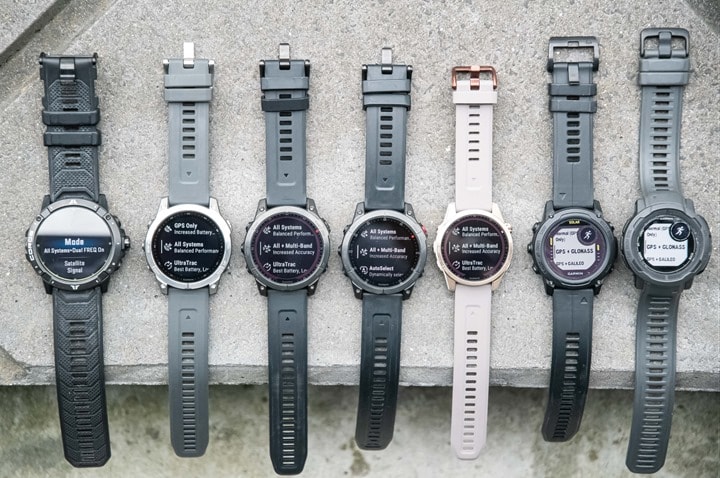
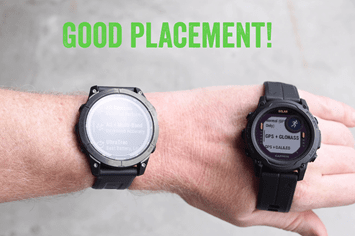
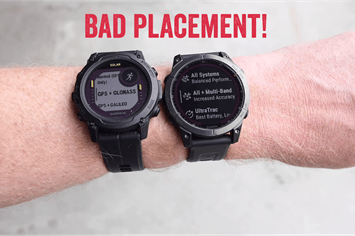
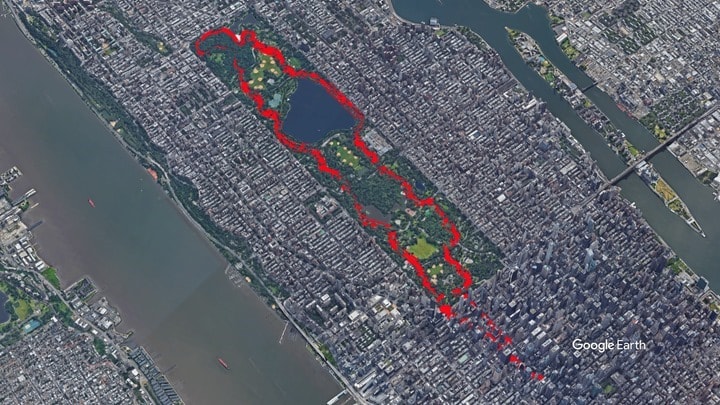
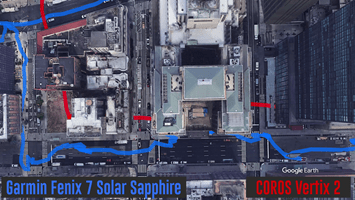
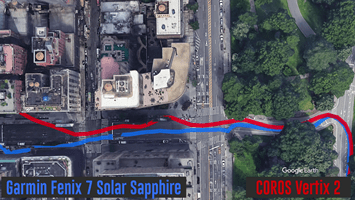
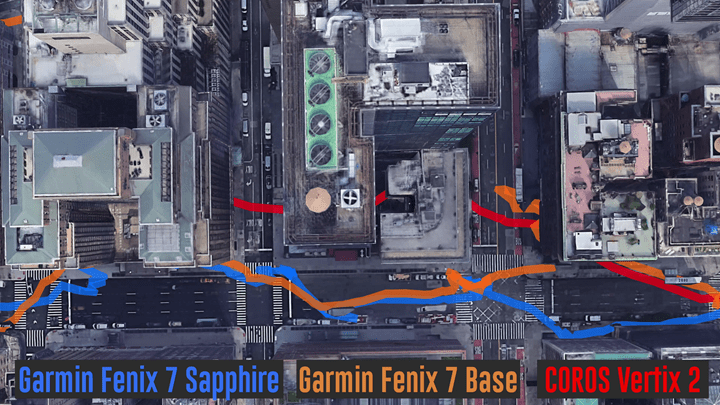
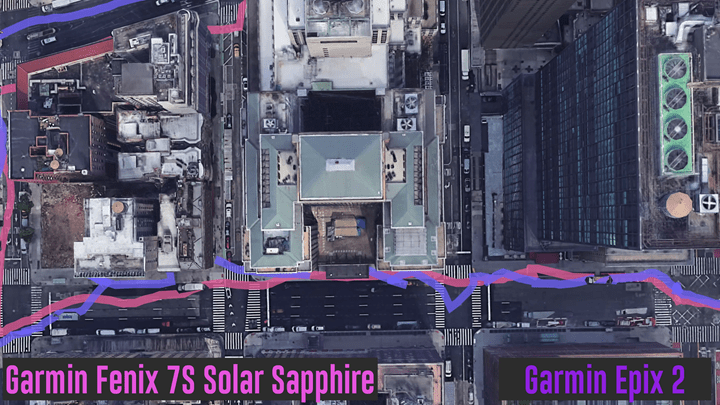
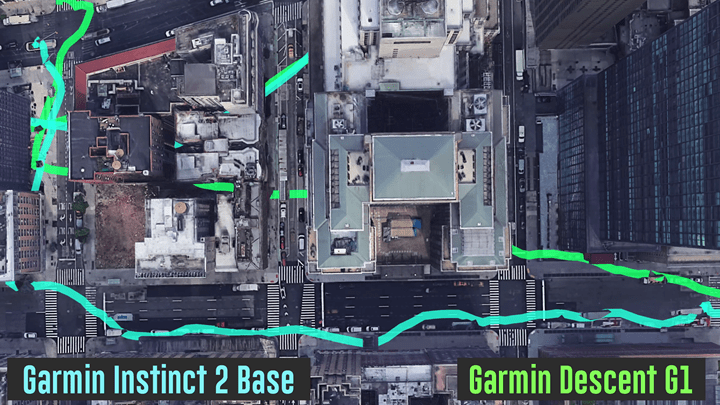
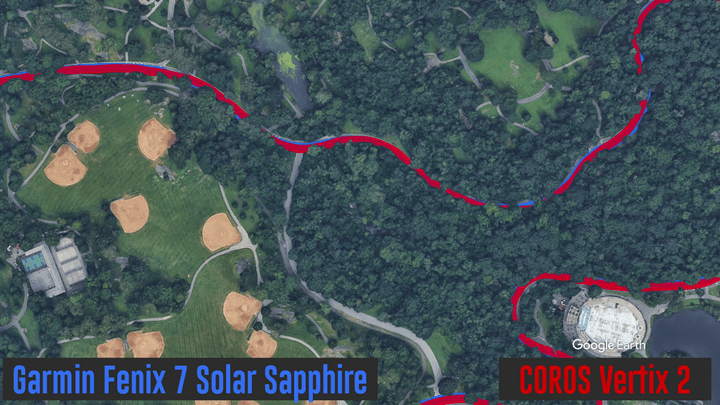
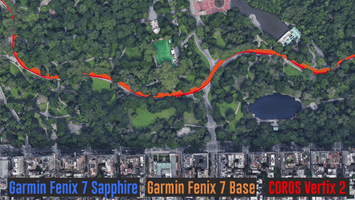
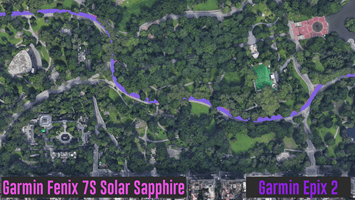
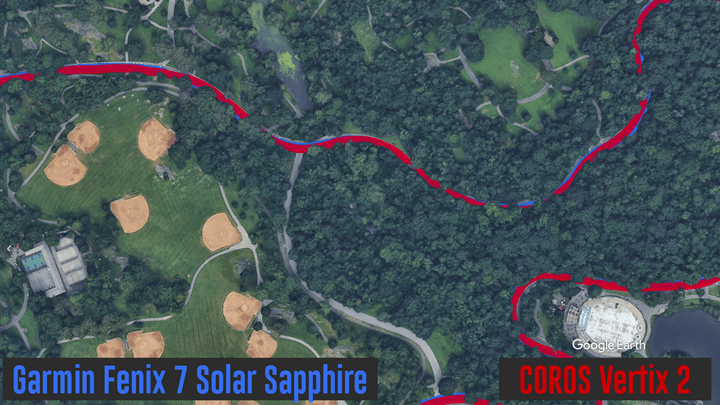
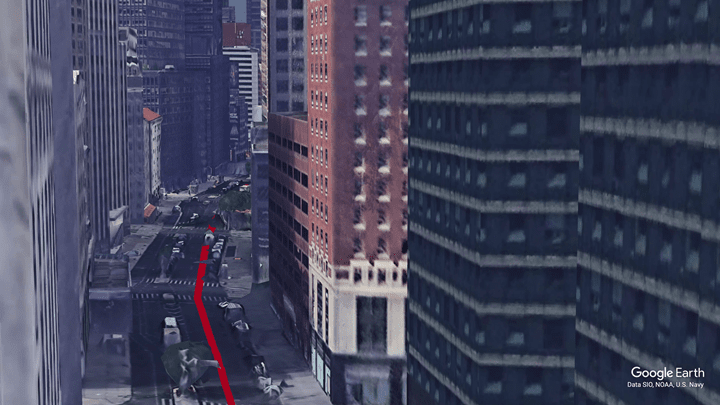
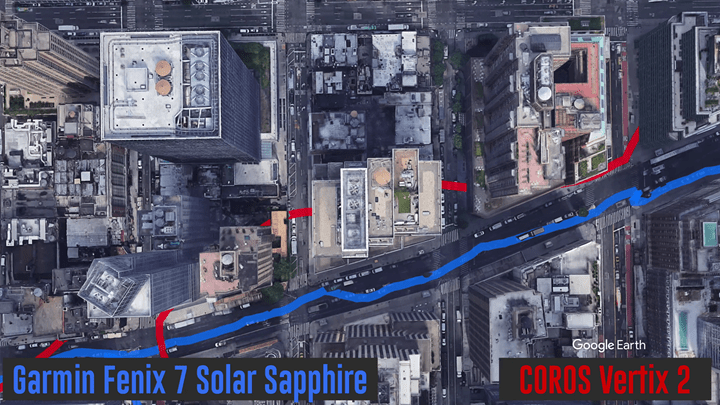
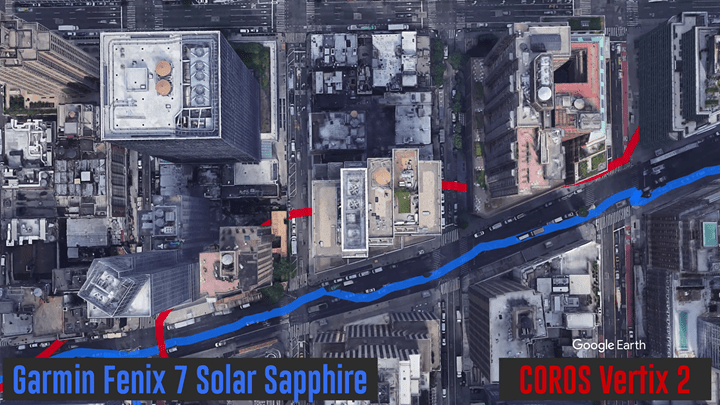
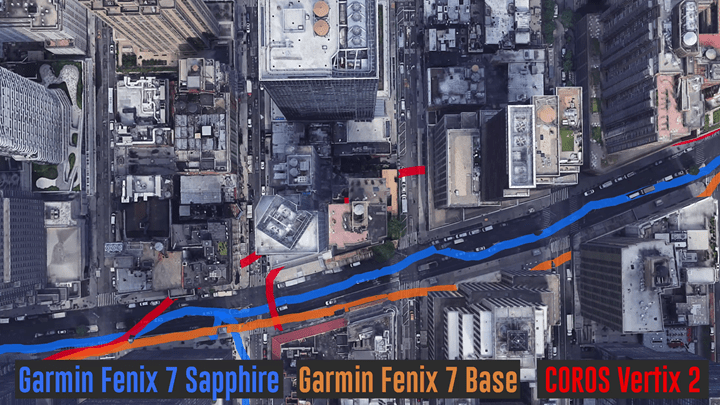
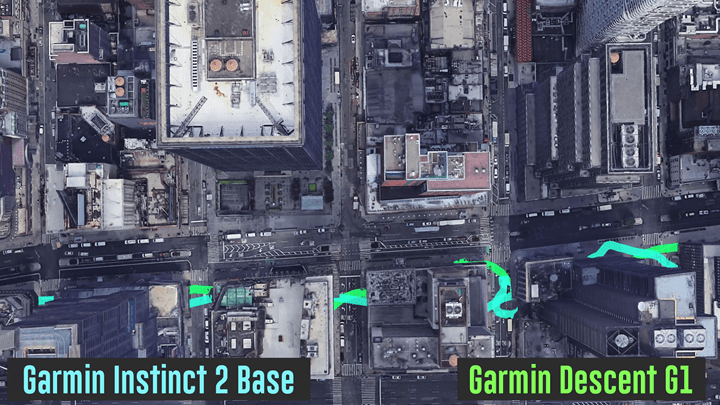
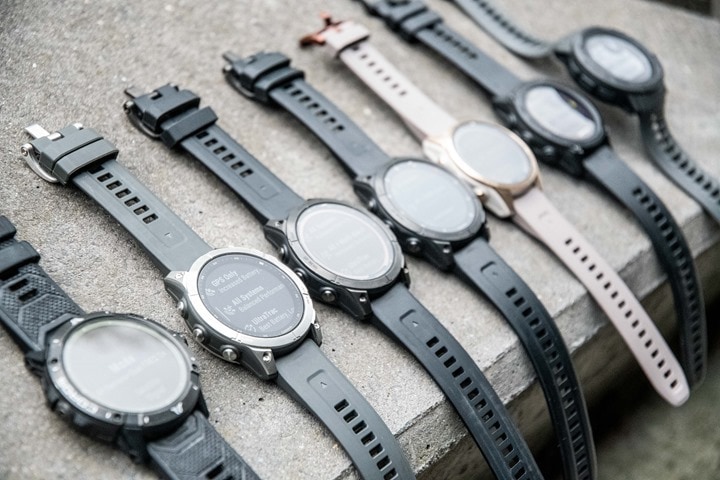


0 Commentaires